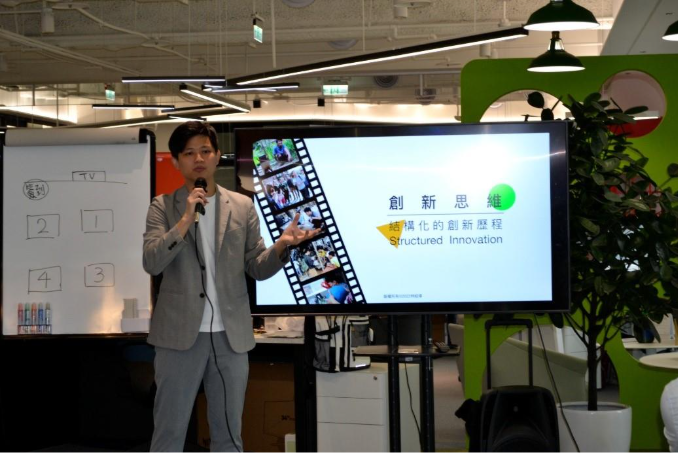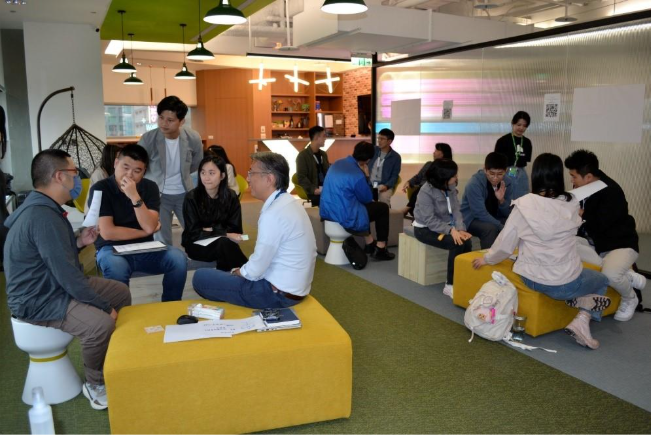In this era where speed and innovation are highly emphasized, creativity is no longer just a flash of inspiration. True innovation comes from understanding people and problem insights. In this course, we are honored to invite林紹偉 and 康涵慈from康林生活 to personally guide us starting from observation, providing firsthand experience of the complete design thinking process. The course offers not only methods but also a mindset to redefine the essence of creativity.

Sources of Creativity: Understanding Users and Problem Insights
The heart of design thinking lies in empathizing with users. Many people, when facing a problem, tend to immediately look for solutions, forgetting why the problem occurs.
"Design thinking is not about coming up with the coolest ideas but about finding the real pain points of customers."
During the group exercises, we began with observation and empathy, understanding the motivations behind behaviors from the user's perspective. At this stage, the concept of Persona was introduced to help students build typical user models, and mind maps were used to organize problems and ideas, forming a more complete problem framework. This approach also strengthens the foundation of creativity, as effective creativity starts with understanding the problem rather than generating more answers.
Cross-disciplinary Co-creation: Integrating Different Professional Perspectives
Entering the ideation phase, we started co-creating through a relay of brainstorming. Some organized conceptual prototypes, some proposed usage scenarios, and others continuously challenged existing frameworks. The instructors also encouraged using sketches to visualize ideas, facilitate quick team communication and concept validation. This high-density interaction illustrates the value of cross-disciplinary co-creation. People from different departments generate new perspectives and ideas during discussions, allowing creativity to move forward collaboratively rather than in isolation.

Ideas Beyond the Mind: From Abstract to Testable Prototypes
At the end of the course, we transformed their discussed concepts into testable solution prototypes. Instructors also guided us to consider whether the ideas truly respond to user needs and whether they are feasible in reality. This ensures that creativity is no longer confined to imagination but becomes a tangible, testable, and improvable course of action. The value of design thinking lies not in finding the perfect answer in one go but in gradually approaching real needs through repeated validation and experimentation while emphasizing the importance of action and testing.
Design Thinking: A Mindset Shift from Problems to Action
Through this workshop, we not only learned methods but also experienced a new way of thinking. Design Thinking is a human-centered and problem-oriented innovation approach, focusing on understanding user needs, clarifying problems, exploring multiple solutions, and turning ideas into practical plans. Design thinking is not merely a creative technique but a logical process that enables innovation to be practically implemented.
Design thinking involves five key steps:
1. Observation and Empathy: Start from the user's perspective to understand their needs and pain points.
2. Define the Problem: Analyze your observations to clearly define the core problem that needs solving.
3. Find Solutions: Clarify directions, strategies, and consider possible ways to solve the problem.
4. Ideation: Engage in creative thinking to generate diverse and promising solutions.
5. Prototype and Test: Turn ideas into testable prototypes, refine and optimize through practical testing.
The application of design thinking is wide-ranging and can be applied to any field—from product design and service innovation to organizational strategy. However, the goal of innovation is not merely to be different but to provide solutions that truly enhance the user experience and create value.
Problem-led, step-by-step implementation
Design thinking emphasizes that innovation does not begin with "having an idea" but with "asking questions." By observing users, collaborating across disciplines, and testing prototypes, each attempt becomes the first step of innovation. This course not only provides hands-on experience but also teaches us a way of thinking that can be extended and applied, enabling them to continue influencing their future work and life.
